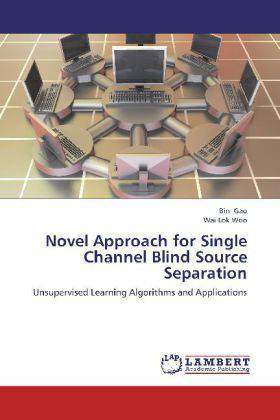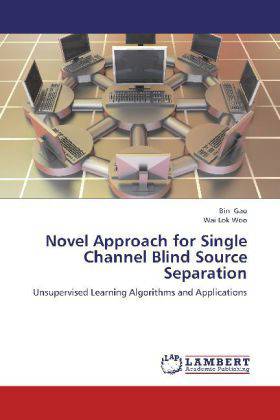
- Afhalen na 1 uur in een winkel met voorraad
- Gratis thuislevering in België vanaf € 30
- Ruim aanbod met 7 miljoen producten
- Afhalen na 1 uur in een winkel met voorraad
- Gratis thuislevering in België vanaf € 30
- Ruim aanbod met 7 miljoen producten
Zoeken
Novel Approach for Single Channel Blind Source Separation
Unsupervised Learning Algorithms and Applications
Bin Gao, Wai Lok Woo
Paperback | Engels
€ 67,45
+ 134 punten
Omschrijving
Single channel blind source separation (SCBSS) is an intensively researched field with numerous important applications. This book proposes a novel method based on variable regularised sparse nonnegative matrix factorization which decomposes an information-bearing matrix into two-dimensional convolution of factor matrices that represent the spectral basis and temporal code of the sources. To further improve the previous work, a new method is developed based on decomposing the mixture into a series of oscillatory components termed as intrinsic mode functions (IMF). It is shown that IMFs have several desirable properties unique to SCBSS and how these properties can be advantaged to relax the constraints posed by the problem. In addition, this book develops a novel method for feature extraction using psycho-acoustic model and a family of Itakura-Saito divergence based novel matrix factorization has been developed. The proposed matrix factorizations have the property of scale invariant which enables lower energy components to be treated with equal importance as the high energy ones. Results show that all the developed algorithms presented in this book outperformed conventional methods
Specificaties
Betrokkenen
- Auteur(s):
- Uitgeverij:
Inhoud
- Aantal bladzijden:
- 192
- Taal:
- Engels
Eigenschappen
- Productcode (EAN):
- 9783659260001
- Uitvoering:
- Paperback
- Afmetingen:
- 150 mm x 220 mm

Alleen bij Standaard Boekhandel
+ 134 punten op je klantenkaart van Standaard Boekhandel
Beoordelingen
We publiceren alleen reviews die voldoen aan de voorwaarden voor reviews. Bekijk onze voorwaarden voor reviews.








